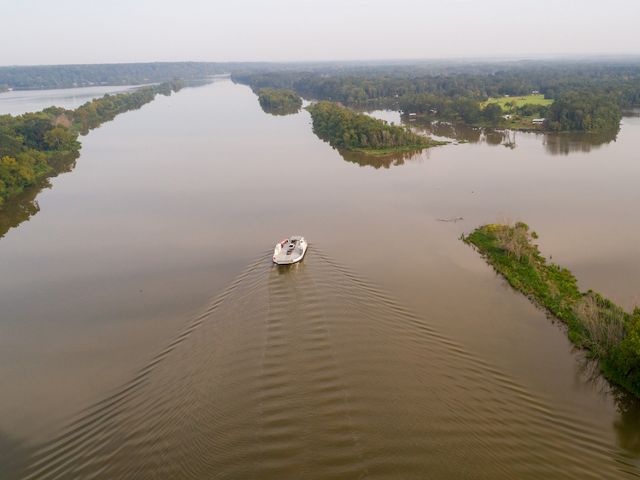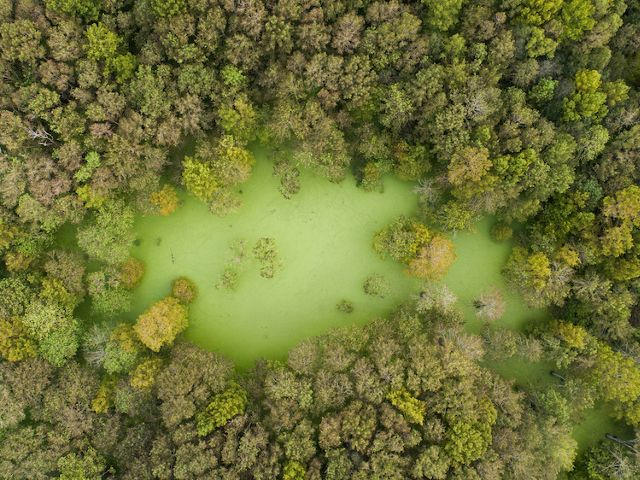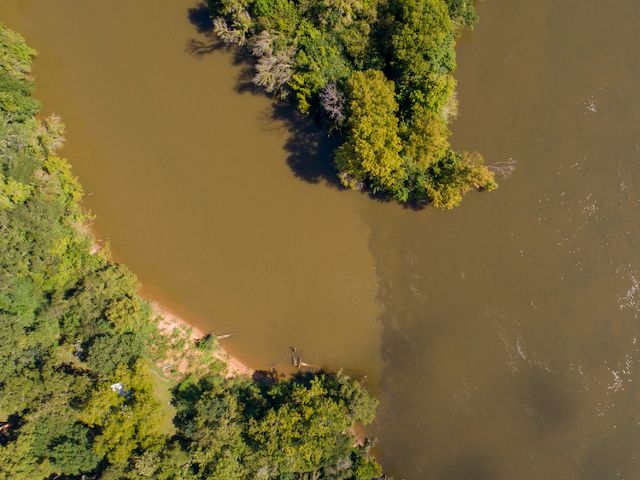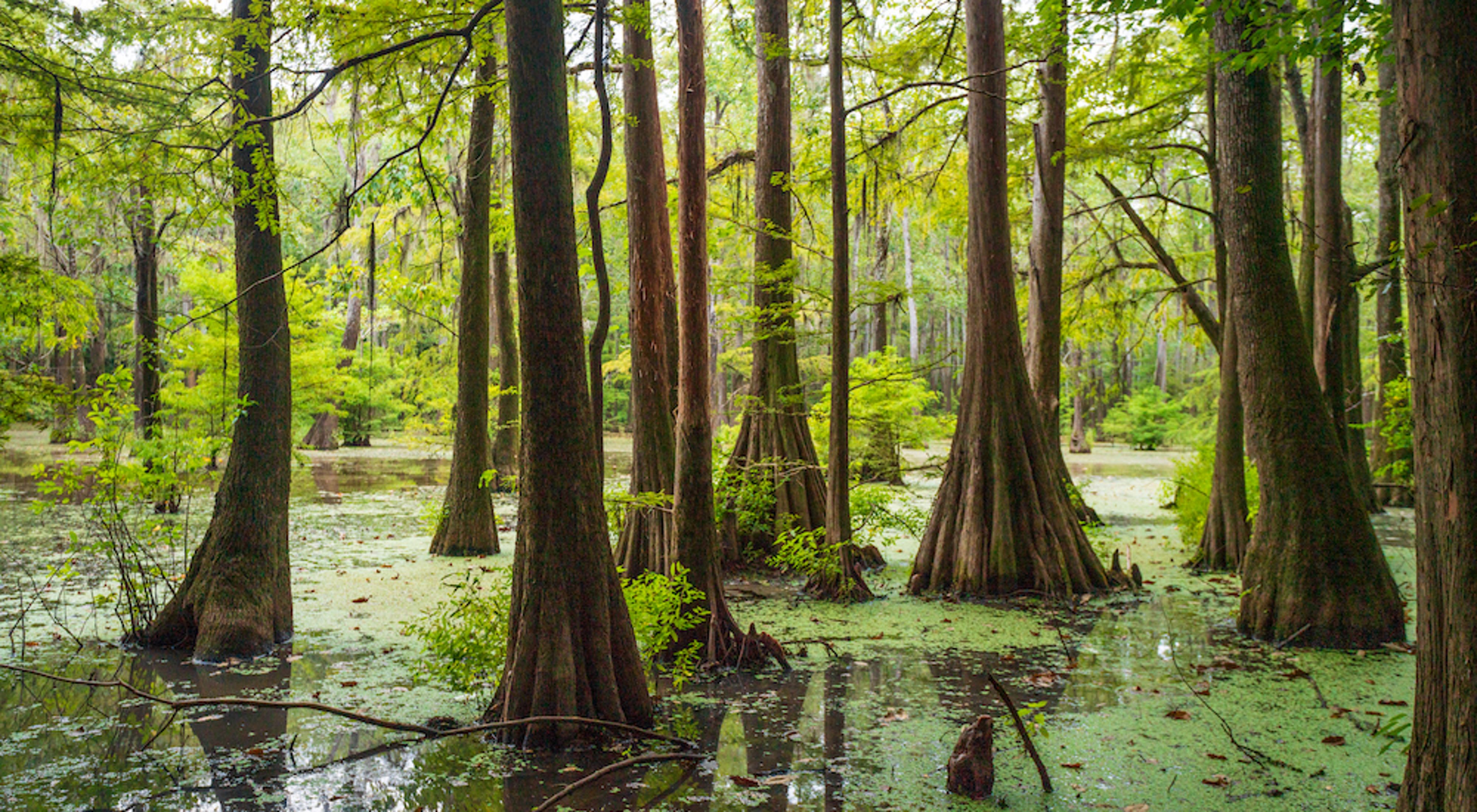In Monroe County, some 100 miles north of the Gulf of America there is, many believe, an Alabama sturgeon who can’t get home. For thousands of years this sturgeon’s ancestors navigated the twisting currents of the Alabama, swimming hundreds of miles upstream to spawn in one of the world’s most ecologically diverse and significant ecosystems. The Alabama sturgeon, a gorgeous and fantastical-looking shiny green and yellow cousin of the Gulf sturgeon, once roamed Alabama’s rivers all the way from the Mobile-Tensaw Delta to the upper reaches of the Cahaba, Coosa, and Tombigbee rivers. It was so plentiful it once supported an entire caviar industry in Alabama.
Today, biologists are chasing its ghost.

Since the turn of the century only three Alabama sturgeon have been caught. The last one in 2004. In 2009, less than 20 years after being formally identified as a unique species, the last one ever seen in Alabama stopped communicating via a tracker that biologists had managed to place on it. Today the Alabama sturgeon exists only as a manifestation of hope—and science. In recent years biologists found traces of Alabama sturgeon DNA in the Alabama river. Somewhere, somehow there should be Alabama sturgeon still alive, following its natural instincts to travel upstream and spawn, releasing its larvae to float down and populate Alabama’s rivers.

Building Barriers
In the 1950s you couldn’t launch off a rope swing into an Alabama river without landing on a sturgeon. But, another thing happened in the 1950s—we started building dams. In 1956 construction began on the Claiborne lock and dam in Franklin. Seven years later, in 1963, work began on the Millers Ferry lock and dam in Wilcox County. In an effort to satisfy the desire for easier river navigation, and electricity, the United States Army Corps of Engineers began work on two projects that would literally and figuratively alter the course of the Alabama River.
These two dams dramatically improved the navigability of the Alabama River, and increased recreation opportunities up and down the river. They also threw up giant roadblocks for species that migrate up the Alabama and into the Cahaba. Long ago concerns about the impact of these dams on diversity have unfortunately borne out. Between 1982 and 2002 there was a 20-40% decline in the diversity of fish species caught during sampling surveys, and the number of mussel species found in the Cahaba River have decreased from about 50 to about 27. And of course we’re still looking for our Alabama sturgeon.
These numbers do not necessarily mean that the dams alone are cause for the decline in biodiversity in the Cahaba River, but they are definitely not helping. We know that sensitive species like darters and minnows are decreasing in abundance while other more tolerant species like stonerollers and sunfish are increasing. And yet, we also know that we haven’t reached the limits of understanding the biodiversity in this area. Biologists are still discovering plant species in the area, all while other species are close to blinking out and being lost forever.

The Opportunity
We could, you know, reconnect the rivers. Whether it is an ecological reconnection, meaning the creation of some sort of fish passage, or an outright removal of the lock and dam system, the impact would likely be the same—a restoration of the ability of species to migrate freely through one of the world’s most important river systems. Several groups have already begun this work. TNC along with the Geological Survey of Alabama, the Alabama Department of Conservation and Natural Resources, the Alabama Department of Environmental Management, Alabama’s Office of Water Resources, and the United States Fish and Wildlife Service are mapping out restoration options, and future for the river and its species.

It is not hyperbole to say that a project of this magnitude would culminate in the most ecologically significant river reconnection project in the history of the United States. It turns out that Alabama has something pretty special in its woods waters: the more than 4,000 species that call Alabama home, making it the fourth most biologically diverse state in the country, and the most diverse state in aquatic biology.
In 2002 Alabama ranked second on a list of extinctions—species unique to Alabama that no longer exist. We have come a long way since then. The opportunity in front of us is stunning. We are now poised to reconnect the Alabama and Cahaba rivers, help avert the decline in biodiversity in the state, and protect some of the state’s 4,737 treasures. And maybe we’ll find that sturgeon.

We Can't Save Nature Without You
Sign up to receive updates from Alabama.


